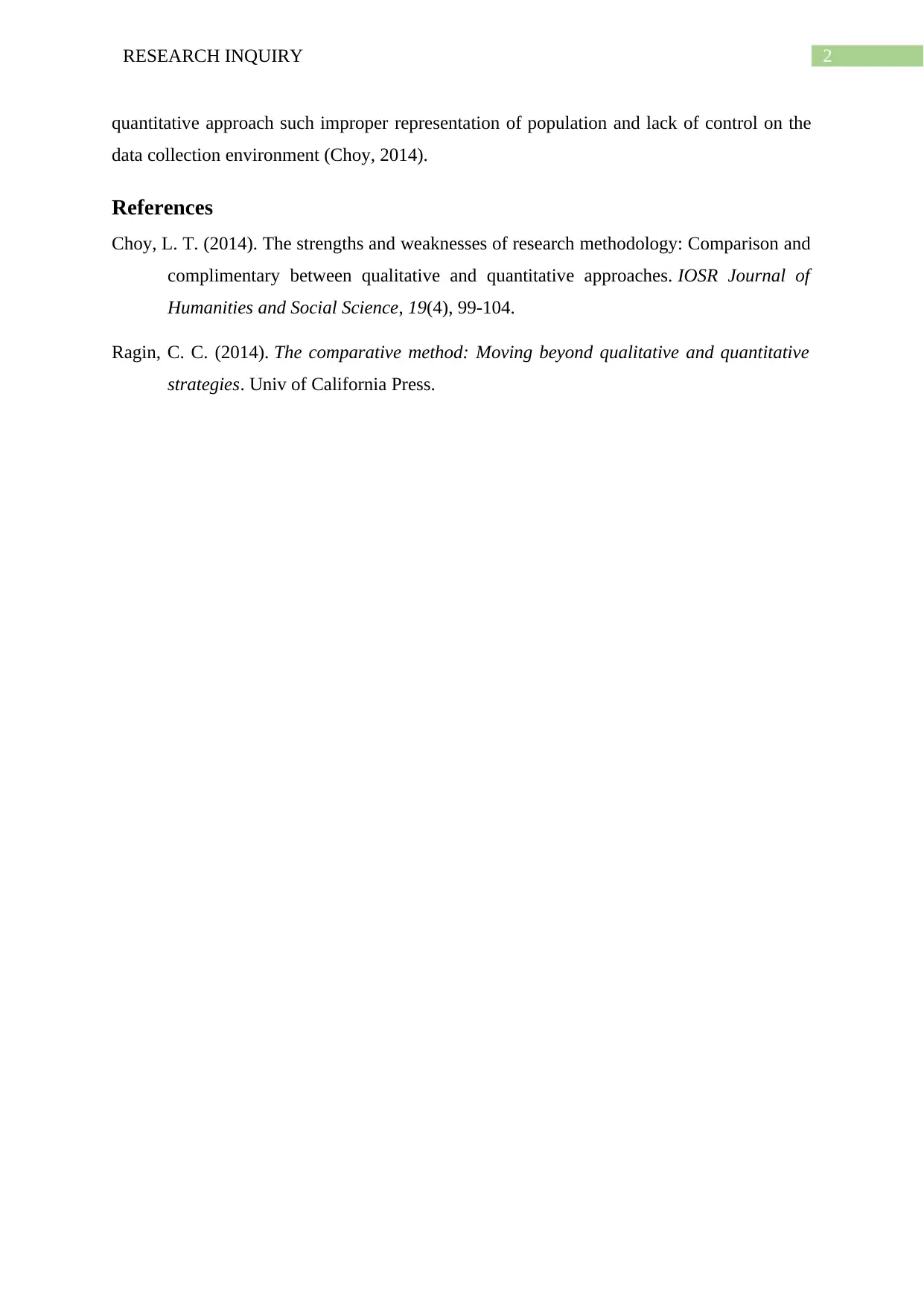University Research Report: Qualitative vs. Quantitative Approaches
VerifiedAdded on 2022/12/29
|3
|550
|28
Report
AI Summary
This report compares and contrasts qualitative and quantitative research methods. Qualitative research, often used in exploratory studies, focuses on understanding underlying motivations and opinions through methods like interviews and focus groups, using inductive reasoning to analyze data. It is time-consuming and subjective, but offers in-depth insights. Quantitative research, conversely, aims to quantify data, using surveys and statistical techniques to identify patterns and generalize results, employing deductive reasoning. It is highly structured and efficient for examining cause-and-effect relationships, though it can suffer from issues with population representation and data collection control. The report highlights the strengths and limitations of each approach, emphasizing their distinct methodologies and applications within various research contexts.
1 out of 3









![[object Object]](/_next/static/media/star-bottom.7253800d.svg)